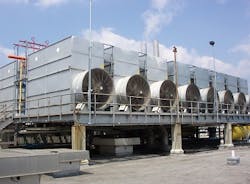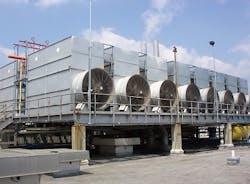Solution launched to break down biofilms in water cooling systems
WOLVERHAMPTON, UK – British manufacturer NCH Europe has launched a system called bioeXile designed to remove biofilms from water cooling systems.
The product is designed to help reduce reduce manufacturing costs for several industries that depend on cooling systems, including food processing plants.
Biofilms are made up of bacteria that have adhered to a surface and the ‘slime’ they produce to form an insulating, protective layer around them.
They spread as the bacteria multiply and insulate the pipe, making a water cooling system less effective and much more expensive to run.
“Biofilm layers are difficult to detect, since they can be just a few microns thick,” explained Dr Simona Vasilescu of the Water Treatment Innovation Platform at NCH Europe.
“But businesses should not underestimate how much they can impact on the efficiency of a water cooling system. A 0.1mm layer of biofilm can reduce efficiency so much that the associated electricity costs of keeping everything running drastically increase, four times the amount than the additional costs resulting from a system with the same thickness of calcium carbonate scale.”
As well as severely affecting the heat transfer efficiency, biofilms are also associated with the spread of Legionella bacteria. BioeXile breaks down the protective biofilm and exposes the Legionella bacteria that can be then controlled with biocides.
Dr Simona Vasilescu added: “Biofilms are very difficult to remove due to the complex chemically resistant mechanism that holds them together. Our bioeXile product breaks this down, exposing the underlying bacteria to be targeted with biocide treatment.”
###
Read more

